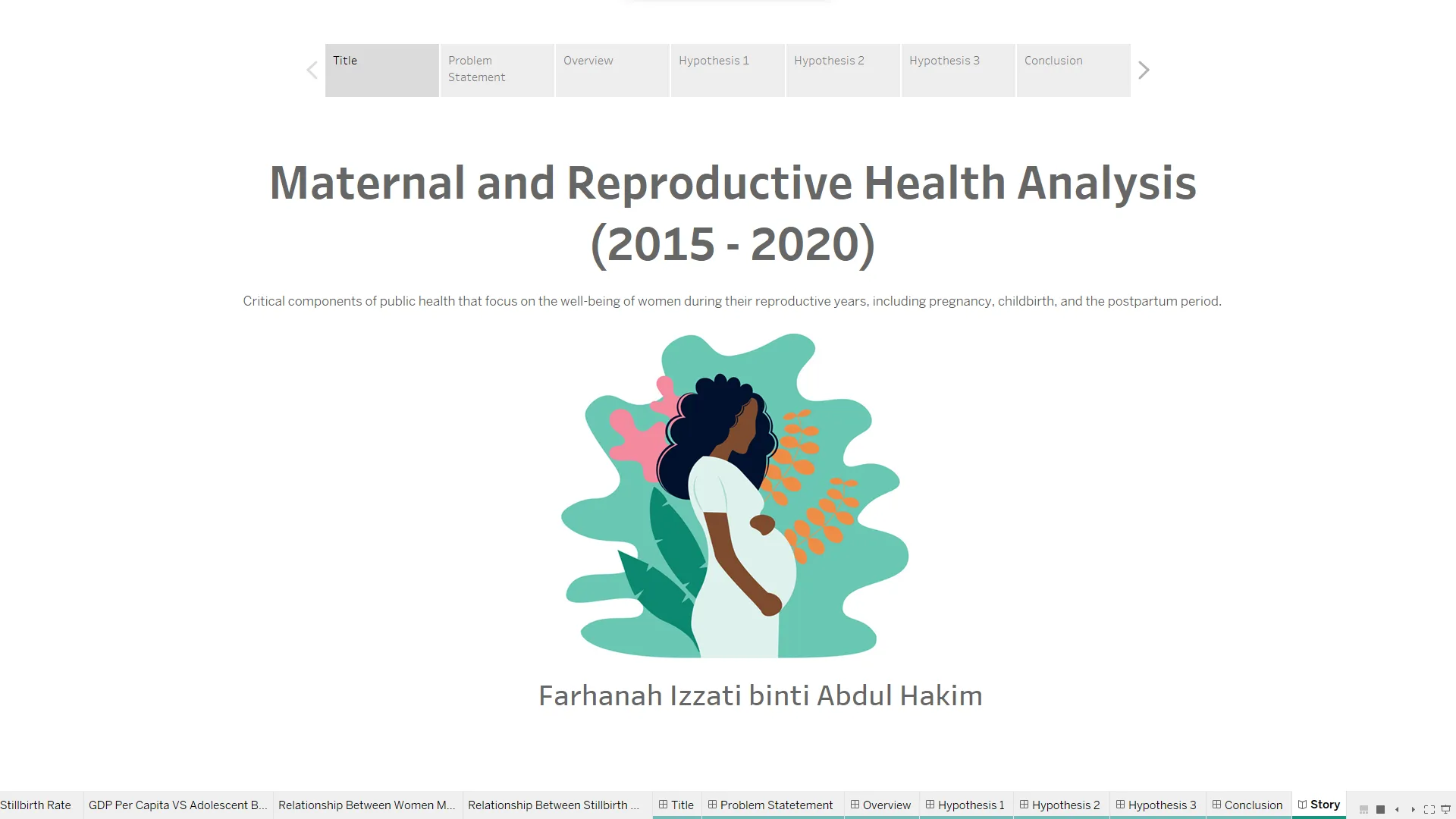
Global Maternal and Reproductive Health Analysis (2015 - 2020)
Purpose:
This individual project is a comprehensive analysis and visualization of global maternal and reproductive health data spanning from 2015 to 2020. Its primary objective is to shed light on the critical challenges and issues surrounding maternal and reproductive health worldwide. By doing so, we aim to raise public awareness, foster community engagement, and promote support for initiatives that improve the well-being of women and newborns.
Hypotheses:
- Lower-Income Countries and Health Outcomes: We hypothesized that lower-income countries have a higher maternal mortality ratio, adolescent birth rate, and stillbirth rate. These indicators reflect the challenges faced by women and children in resource-constrained settings.
- Early Marriages and Adolescent Birth Rates: We explored whether regions with higher rates of early marriages (under 18) have higher adolescent birth rates, recognizing the potential impact of sociocultural factors on reproductive health.
- Stillbirth Rates and Adolescent Births: Another hypothesis examined whether higher percentages of stillbirth rates are associated with higher adolescent birth rates, aiming to uncover potential connections between these adverse outcomes.
Analysis Overview:
The project provides a multifaceted analysis by visualizing key indicators of maternal and reproductive health on a global map. The indicators include the maternal mortality ratio, stillbirth rate, total adolescent birth rate, family planning satisfaction, and underage marriage rate. These visualizations enable viewers to gain insights into the geographic distribution and disparities in these critical health indicators.
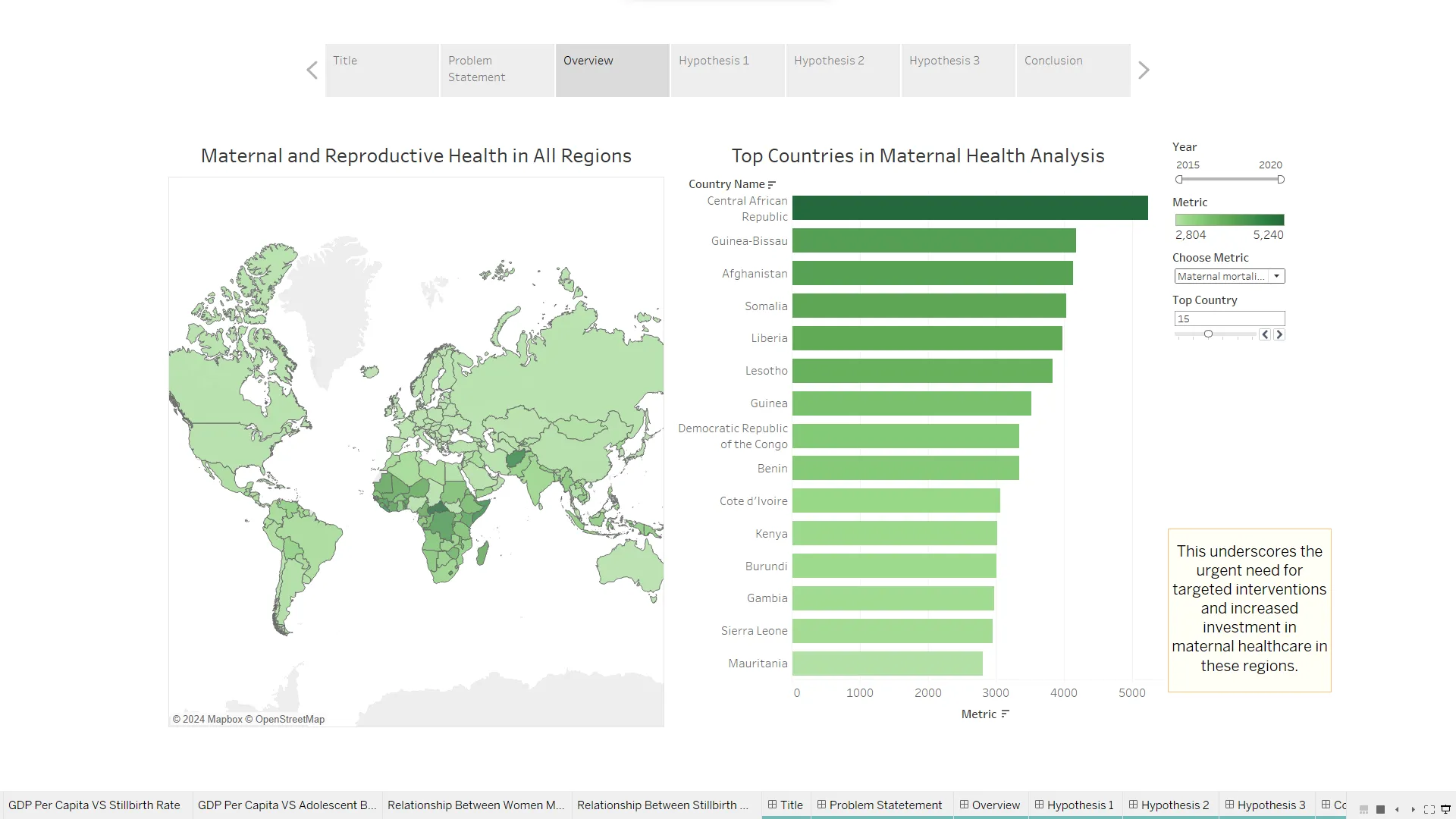
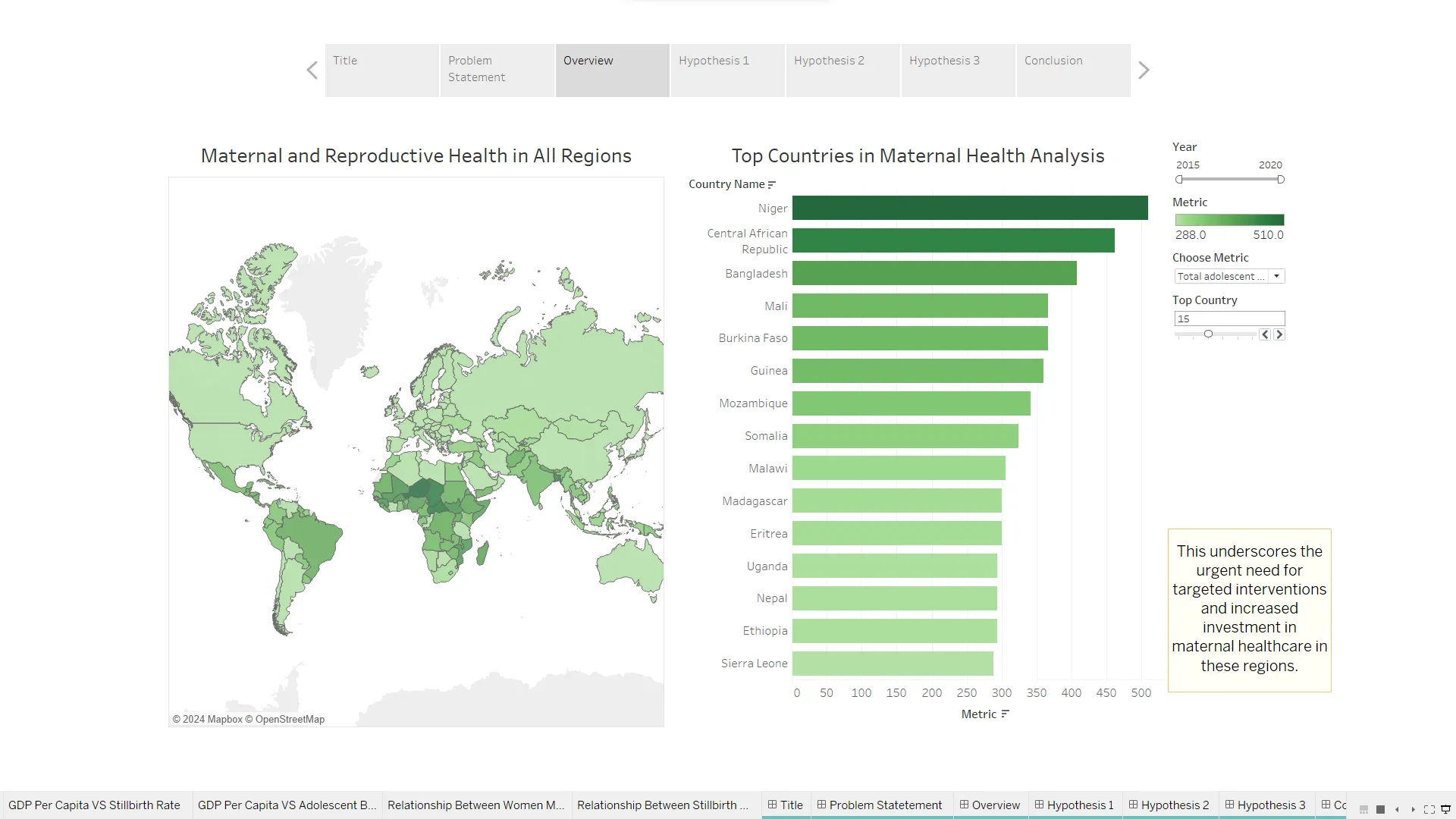
Chart/Graph Types:
-
For the first hypothesis, a density chart was utilized to illustrate the distribution of maternal mortality ratios, adolescent birth rates, and stillbirth rates across different regions, allowing for easy comparison.
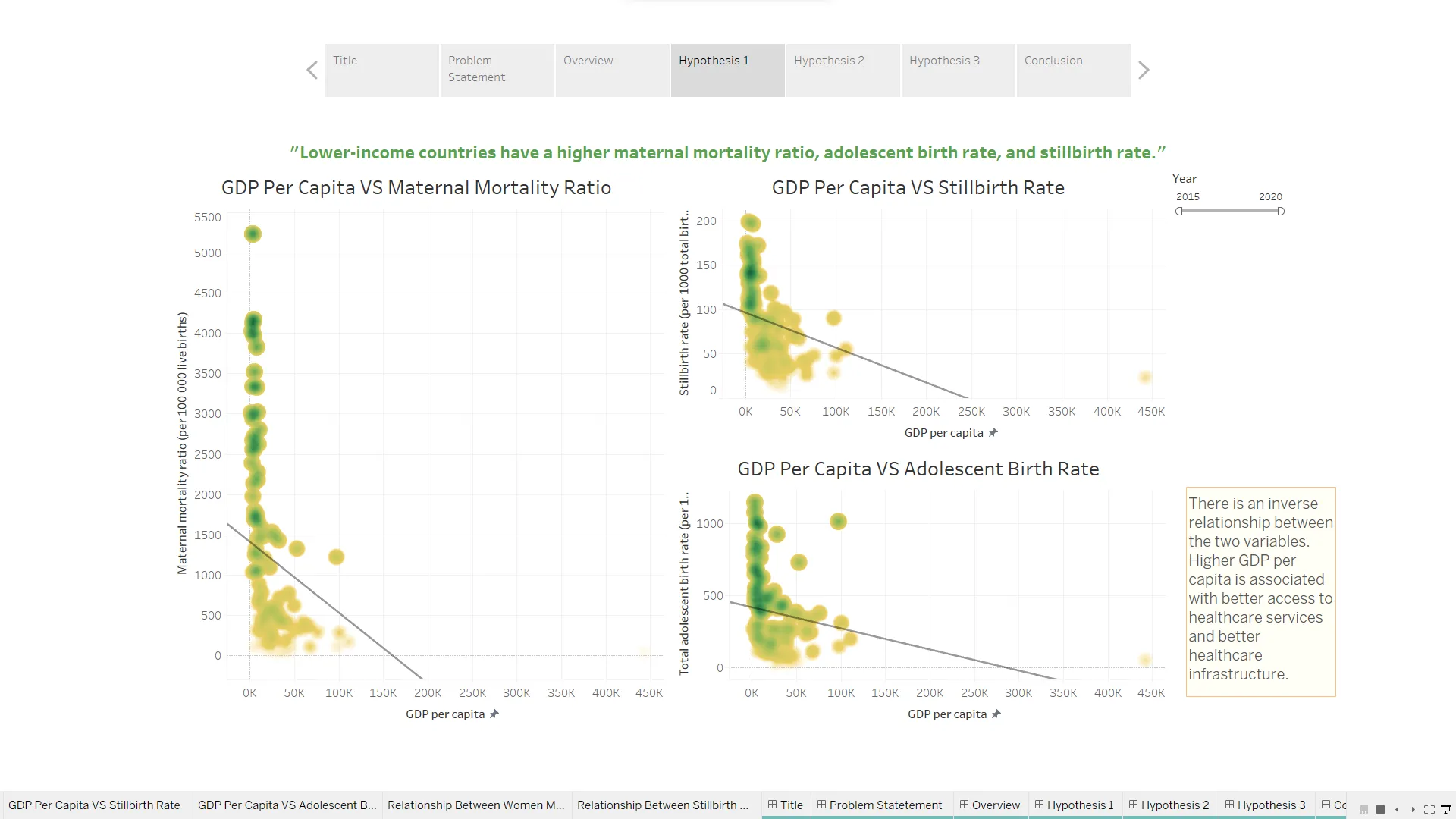
-
For the second and third hypotheses, scatter plots were employed to visualize the relationships between early marriage rates and adolescent birth rates, as well as between stillbirth rates and adolescent birth rates. These scatter plots provide a clear picture of potential correlations.
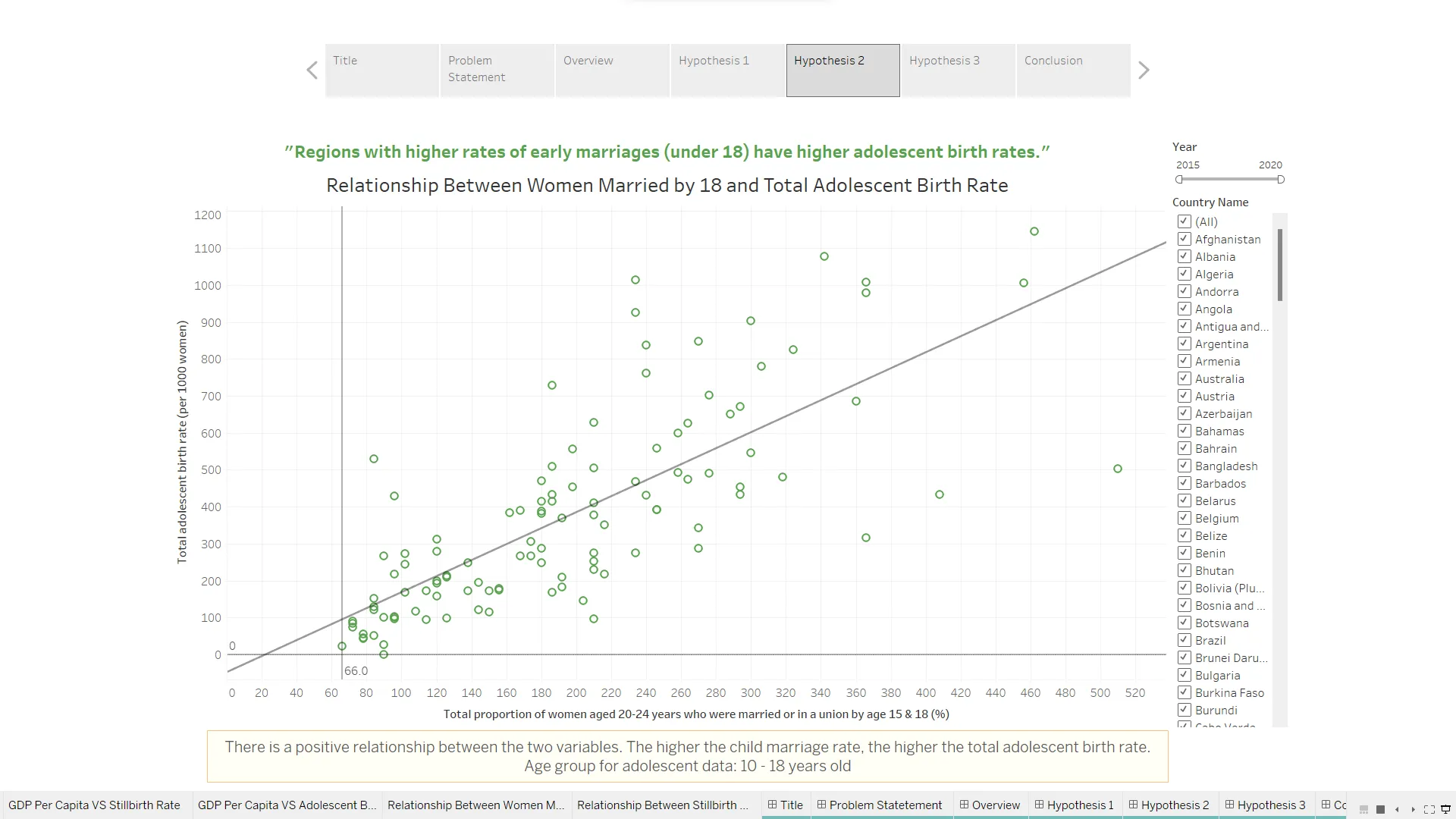
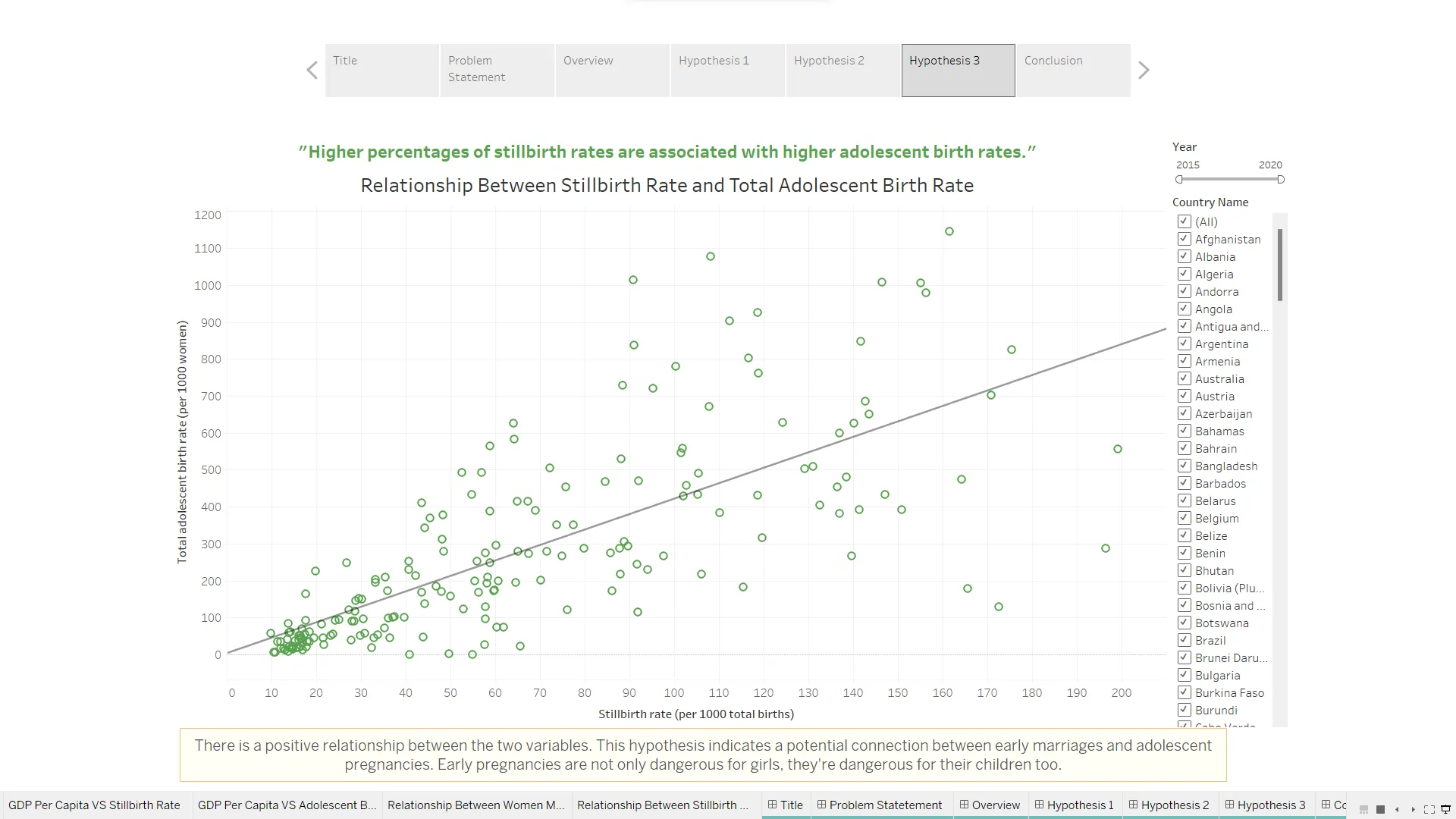
Conclusion:
The project’s findings have significant implications for global health and development. In line with the Sustainable Development Goals (SDG) Target 3, we found that lower-income countries indeed face higher maternal mortality ratios, adolescent birth rates, and stillbirth rates. These disparities underscore the urgent need for targeted interventions, healthcare infrastructure improvement, and equitable access to quality healthcare services in these regions.
Additionally, the project’s analysis confirmed a positive correlation between early marriages and higher adolescent birth rates, as well as an association between higher stillbirth rates and adolescent births. These findings emphasize the importance of addressing sociocultural factors and promoting comprehensive sexual and reproductive health education to reduce adolescent pregnancies.
This capstone project not only serves as an educational resource but also as a call to action. It highlights the importance of addressing maternal and reproductive health challenges and underscores the role each of us can play in promoting global health equity. Together, we can work towards a future where every woman and child enjoys the opportunity to lead a healthy and fulfilling life.